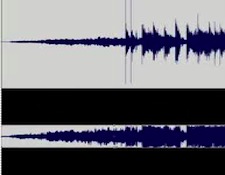It’s the time of year for saving money!

Recently I read a posting from an audiophile who was
complaining that his new (and supposedly better) DAC necessitated turning up
the volume on the quiet passages and down on the louder ones. In the pro world
that’s referred to as “gain riding” and in the bad old days before automated
boards and Sonic Solutions, engineers were often forced to resort to this when
their gear didn’t have the ability to capture the entire dynamic range of a live
or studio performance.
But when a listener feels the need to gain-ride a commercial
recording it’s usually because the dynamic range of the recording exceeds their
system’s ability to deliver dynamics in a linear manner. The rest of their
system could even be “too good” for their room or speakers – causing distortion
by exceeding the speaker’s or room’s dynamic range. And yes, you can overdrive
a room just as you can overdrive speakers.
Another, increasingly common problem is the listening
environment might be too noisy to support a dynamic recording…
My own live classical orchestra recordings routinely have a
dynamic range, from loudest to softest, of over 40 dB. That is loudest to
softest music, not signal. The S/N range of all recorded sound on these
recordings is closer to 60 dB. In an especially noisy environment, such as
inside a moving car or on a subway, there’s no way a system will successfully
reproduce that entire range. Either you’re going to bury the quiet passages
under ambient walla or the high levels of the loud parts are going to hurt both
you and your stereo. The only solutions are manual gain-riding or some automatic
dynamic compression, so the dynamic range between loud and soft will fit inside
the dynamic range capabilities of the reproduction system.
Some audiophiles will claim there’s no such thing as too much
dynamic contrast and better wider dynamic swings are ALWAYS a good thing, but
this may not be the case. Ideally, for optimum fidelity and linearity a
system’s dynamic range shouldn’t need any adjustment or compression, but in the
real world the listening environment’s ability to handle wide dynamic swings
must be considered along with the gear.
There are some listening environments, such as a subway, where
the only way to hear the full dynamic range will be through headphones, and
only if the headphones offer sufficient noise isolation. Unfortunately, it’s
not as easy to noise isolate an entire room (but doable.)
An inconvenient fact about wideband dynamic contrast is that
not all systems can handle ALL of the truth. And sometimes no amount of
reference gear will help – the room or the environment itself is simply too
noisy and incapable of supporting wide dynamics. Sometime the best option (and
least expensive solution) is to listen somewhere else…





